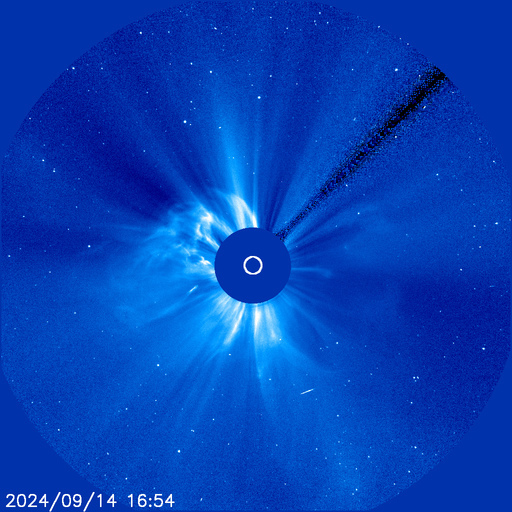NOAA 3825 rotated over the southeast solar limb on 12 September, producing its first X-class flare that very same day at 09:43UTC (EUV image by SDO/AIA 094 ). This compact sunspot group still has a complex magnetic configuration, shown in the SDO/HMI imagery underneath (white light left, magnetogram on the right).
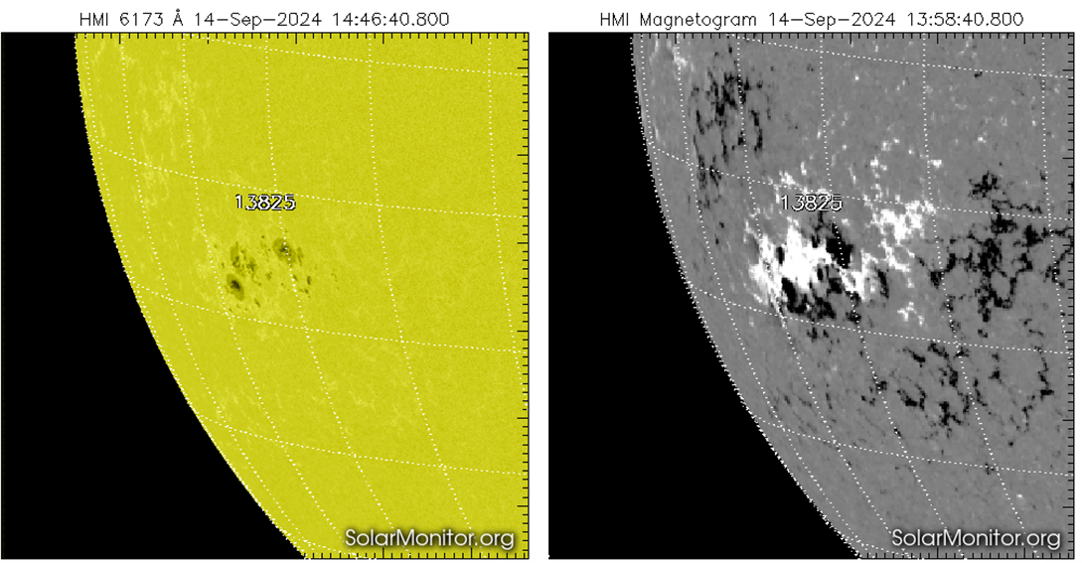
So, it's not such a suprize that this active region produced another X-class flare today 14 September peaking at 15:29UTC (GOES). The extreme ultraviolet (EUV) imagery underneath is from GOES/SUVI 131 and shows the evolution of the X4.5 flare. The blooming and diffraction patterns that can be seen in the GOES/SUVI 131 images are instrumental (more information is in Note 1 of this STCE newsitem).
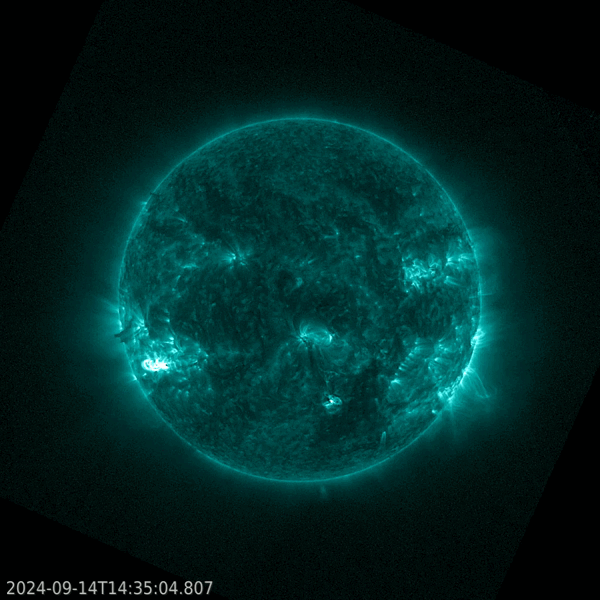
Despite NOAA 3825 being far east (55 degrees), the greater than 10 MeV proton flux has started a gentle increase since around 17:30UTC. However, with 1 pfu, it is currently (19:00UTC) still well below the alert threshold of 10 pfu (GOES). The flaring event was also the source of an important radio disturbance especially at higher frequencies (GHz), as observed by OVSA (spectrogram) and Humain (spectrogram). The EUV imagery clearly shows material being ejected during the eruption, but the bulk of the associated coronal mass ejection (CME) is directed away from Earth. Standing by coronagraphic images to assess any earth-directed component from this CME (see the SIDC website for further updates). Further strong flaring from NOAA 3825 over the next few days is likely, with the chance on an earth-directed CME increasing as the active region approached the central meridian.
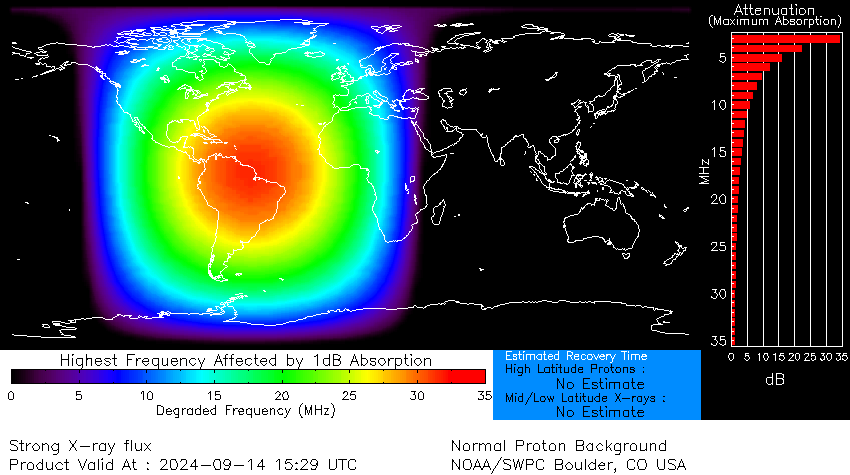
The X-class flare affected HF communications (3-30 MHz) over the Caribbean, South-America and the mid-Atlantic Ocean. This can be seen on the D-RAP map above (NOAA/SWPC). An advisory to civil aviation has been issued (PECASUS). Further strong flaring from NOAA 3825 is possible during the next few days. Some magnetometer stations on the daylight side of the Earth, such as in Kourou, French Guiana, registered a small solar flare effect (SFE) of 15 nT associated with this flare (Intermagnet (BGS)). An SFE happens when one or more components of the magnetic field strength show a spike around the time of the flare's peak due to ionospheric enhancement by the flare's x-ray and (E)UV radiation (also known as a "magnetic crochet").
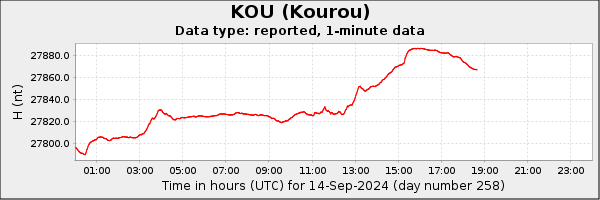
UPDATES
UPDATE 15 Sep 2024 at 07:30UTC - The greater than 10 MeV proton flux is around 4 pfu, well below the 10 pfu threshold. It is expected to continue its gradual rise until the arrival of the associated CME. Coronagraphic images indicate that this CME has indeed an earth-directed component which may deliver a glancing blow to the earth environment on 16 September. Moderate geomagnetic conditions can then be expected. Follow the further finetunings of this forecast at the SIDC website http://www.sidc.be/index.php
